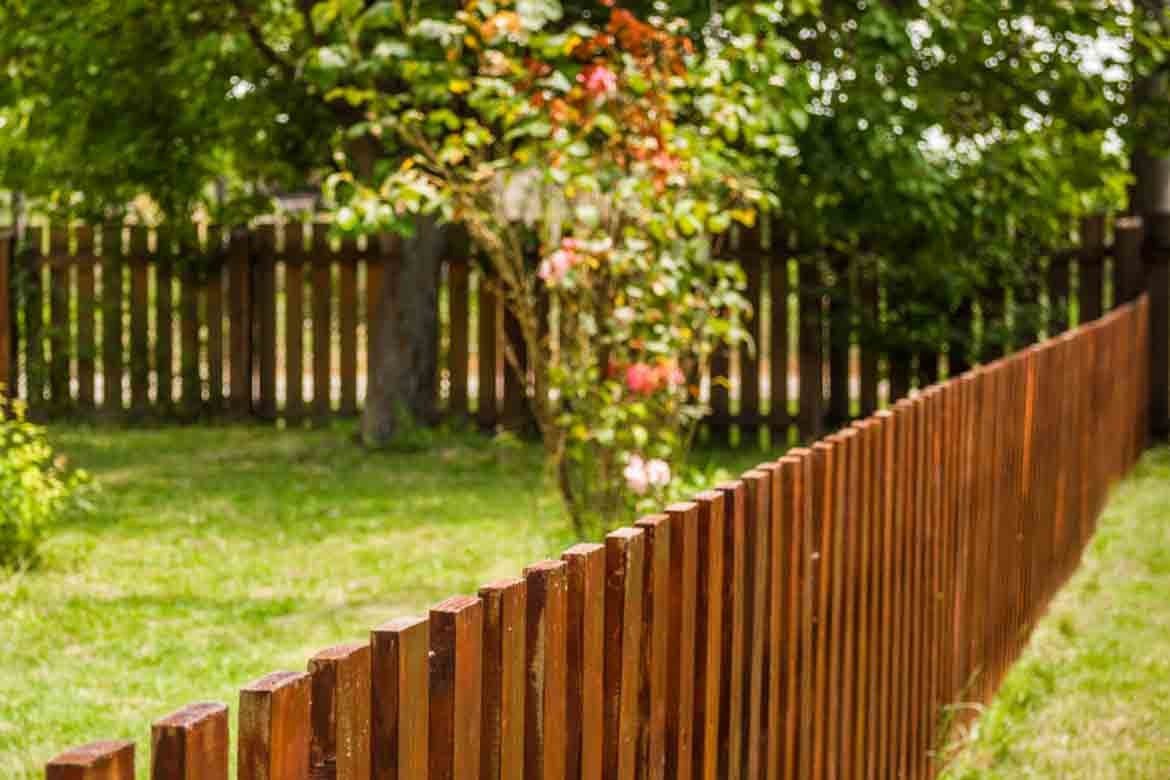Wooden fences have been around since the invention of farming. They have lost no popularity over time and are still the most common type of fence around the world today. Timber fences are versatile and are used for aesthetic, practical and recreational reasons all around Australia.
Timber fencing is popular for a range of reasons. It is environmentally friendly, affordable, easy to install, and has a beautiful natural look. There are many different types of wood, colours and styles to choose from. Timber fences can even increase the value of a property. They offer extra privacy, safety, and control over your backyard. Timber fences are particularly popular among families with young children and pets who want to keep their household safe from wandering near the roads.
Permits and considerations
There are a few things to consider when deciding on a timber fence. The first is how you will install it. In NSW, you must have a building licence before you can do any residential building work – including fencing – if the work exceeds more than $5,000 in value. If your plan for building a timber fence will cost less than that, however, you are welcome to attempt to DIY.
The height of the fence is also an issue to consider. Rules vary between local councils, but some areas have height limits that will require a permit. Generally speaking, no residential fences should be taller than 1.8m in height. To be a good neighbour, you may want to check with the people living next to you about their fences and the average fence height of the neighbourhood.
Timber fence designs and types
There are a huge variety of timber fence designs available across Australia. This is because timber is so versatile – both in installation and material itself. The best timber types for fencing include eucalyptus, redwood, cedar or pressure-treated pine. Treated pine is the most affordable material, ranging from $1-$5 per linear foot.
There are three different purposes for timber fencing: privacy, functional and decorative. A privacy fence is a solid fence which blocks the view of the garden from the street. Functional fences refer to fences with a practical purpose such as keeping animals contained. A decorative fence is one chosen for aesthetic purposes, which may be an extravagant colour or design.
Timber planks can be used in fences horizontally or vertically. Both have a distinct appearance and their own merits. Fences can be spaced, overlapping, uneven or perfectly symmetrical. Decorative post caps are common among Australian homes. The abundance of design choices can make looking for a fence rather daunting. To help you narrow down the search, here are some of the best timber fencing design ideas in style.
Unique timber fence ideas for an outdoor timber feature wall
13. Timber paling
Timber paling is the treated split timber used for fencing. Standard paling is usually made from treated pine. Timber fences can also be lapped, which is when a fence has two overlapping layers of timber paling.
12. Rendered fence with timber slats
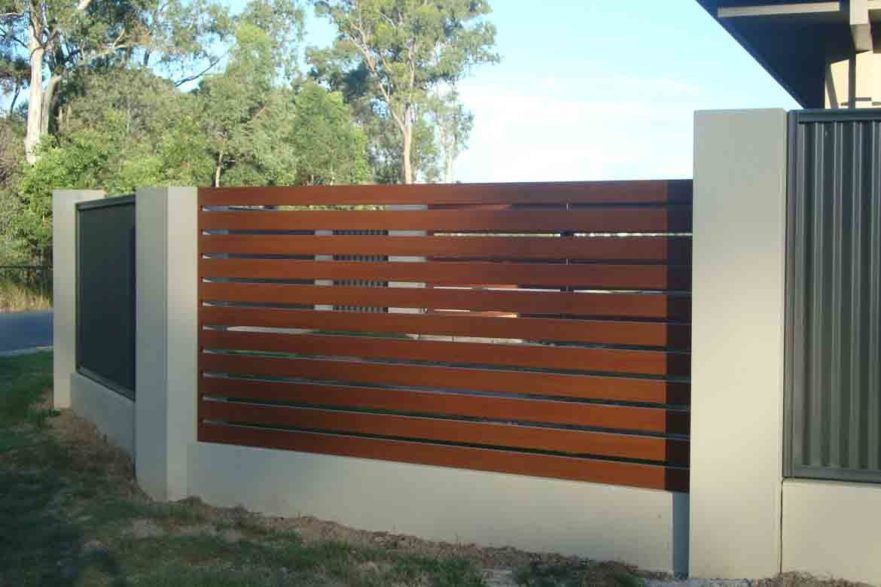
Rendering a fence is a cost effective way to make your fencing more durable, waterproof and attractive. Most fencing materials can be rendered over including brick, tile and timber. For a more aesthetic look, consider rendered pillars with timber slats like the picture above – the perfect blend of rustic natural charm and industrialist modern chic.
11. Timber look aluminium
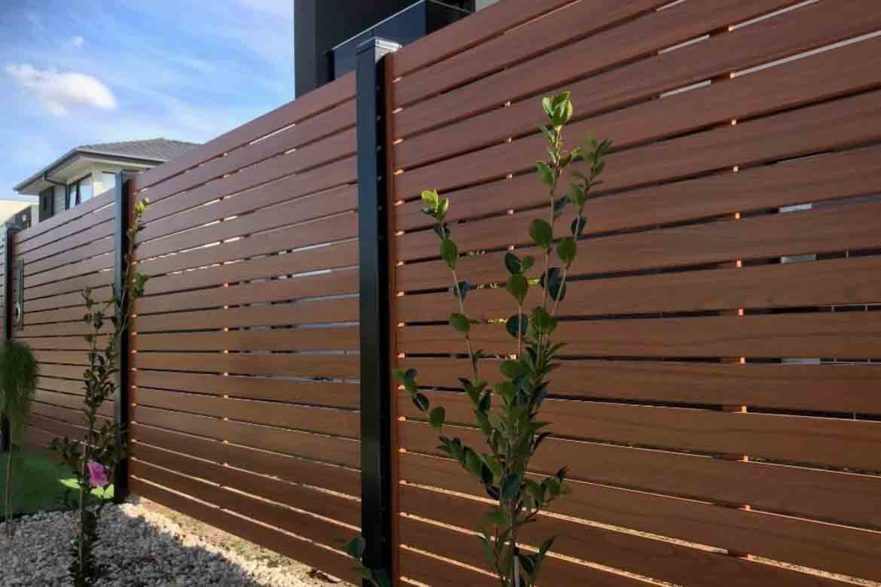
Aluminium is an extremely durable and lightweight material that is perfect for fencing applications. It can be made to look virtually indistinguishable from timber.
10. Privacy screen
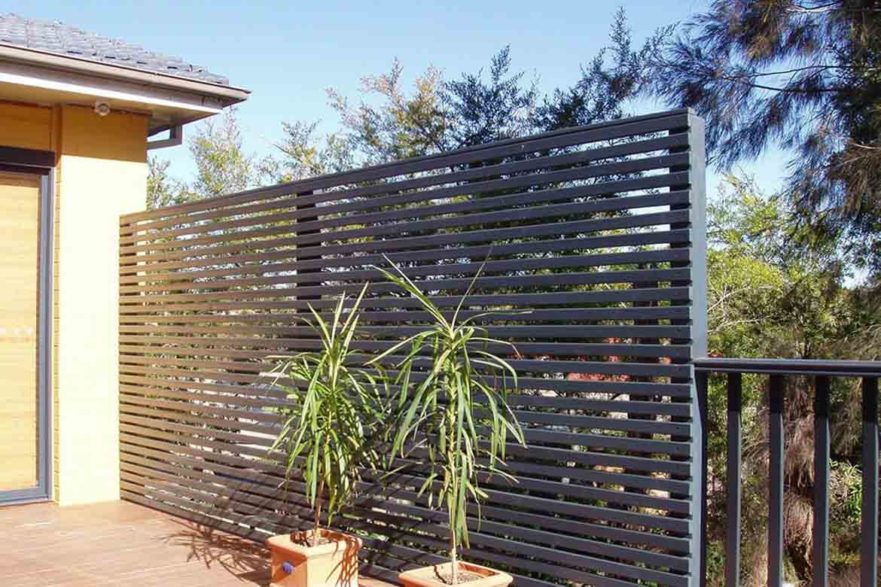
Privacy screens are perfect for allowing light to flow freely whilst keeping your backyard screened from prying eyes.
9. Timber pool fence
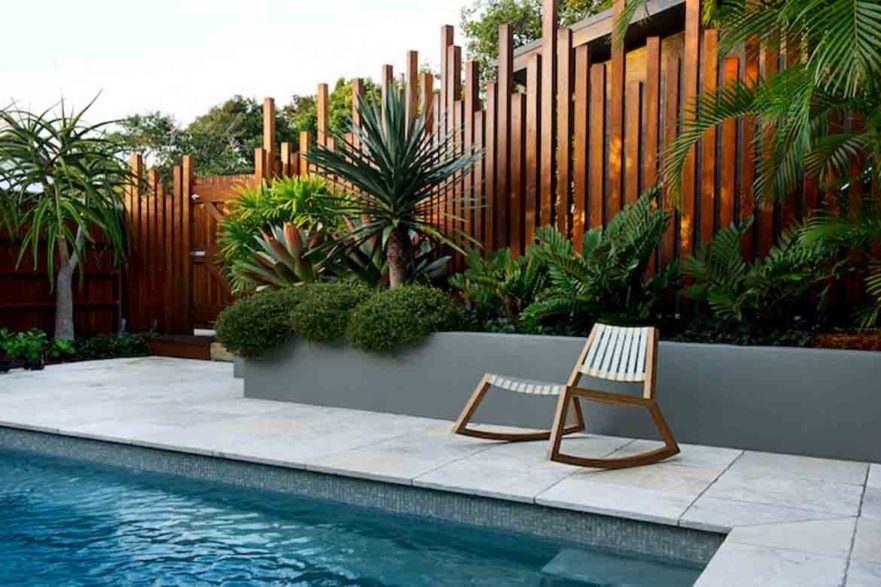
Timber is not a common material for pool fences, but it is extremely beautiful. Pool fences made from timber have a naturalism that will make swimming in your pool feel like taking a dip in a rain-forest river.
8. Vertical timber slat
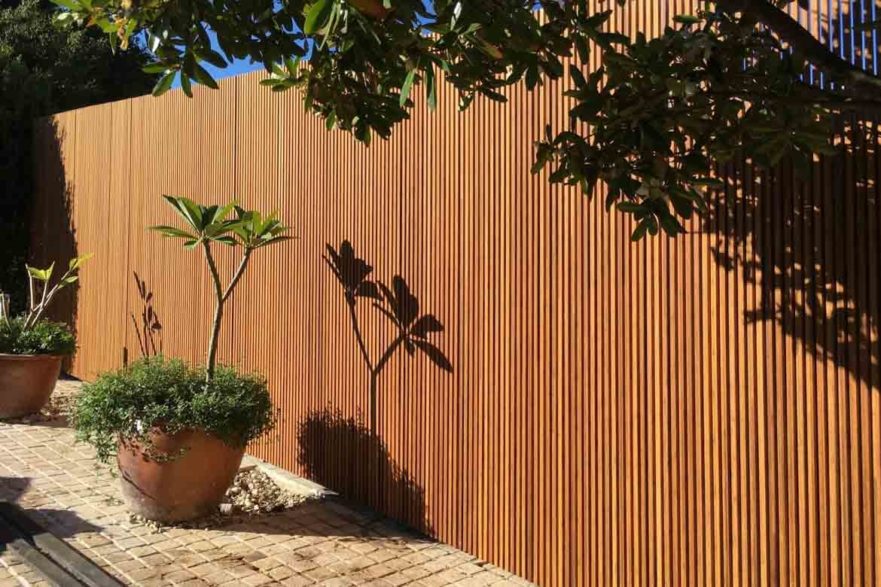
Vertical timber slats are the most popular for a reason. The upward lines make the fence appear taller and provide a sense of order.
7. Black timber
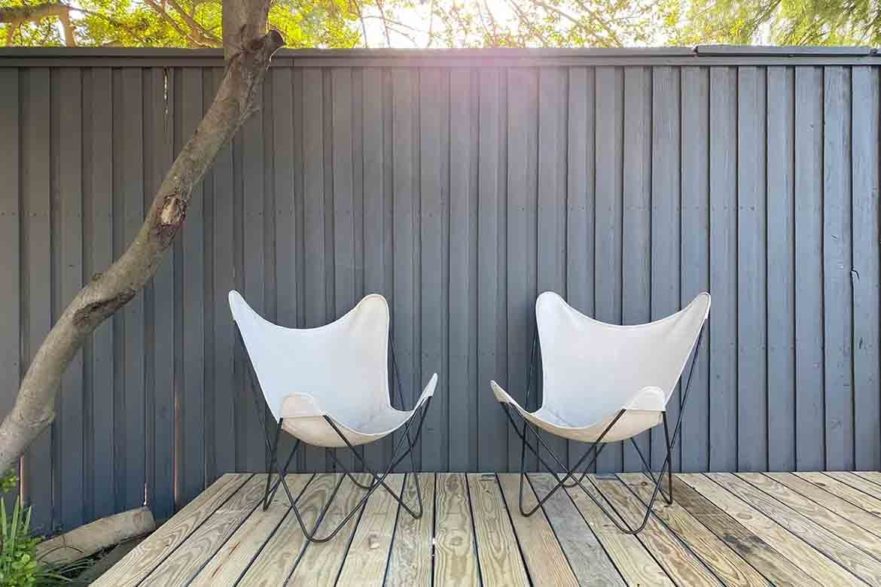
Painting a fence black gives it an air of sophistication that cannot be matched by unrefined timber.
6. Brick and timber
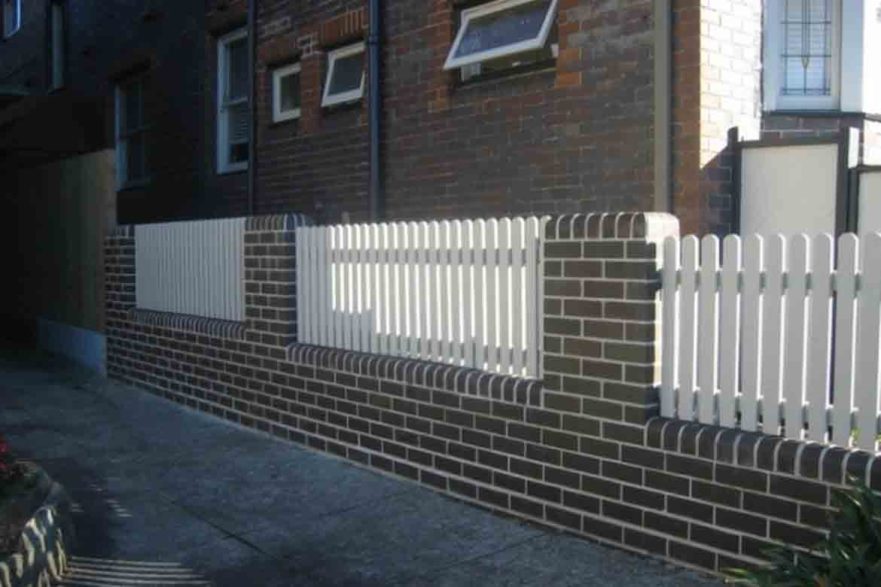
Brick and timber is a classic combination perfect for an older home. Using brick foundations and pillars topped with white timber slabs create a cutesy, romantically old-fashioned appearance.
5. Horizontal
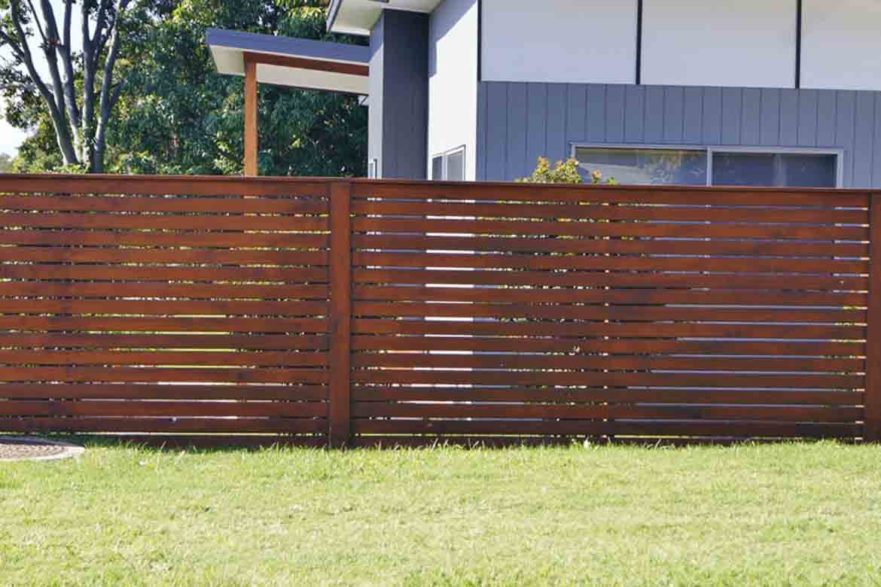
Horizontal timber paling is less common than vertical, but equally beautiful. A horizontal timber fence emphasises length and space, making the area seem stretched long. For big backyards, horizontal timber fences are the perfect way to make your space feel even bigger.
4. Front fence
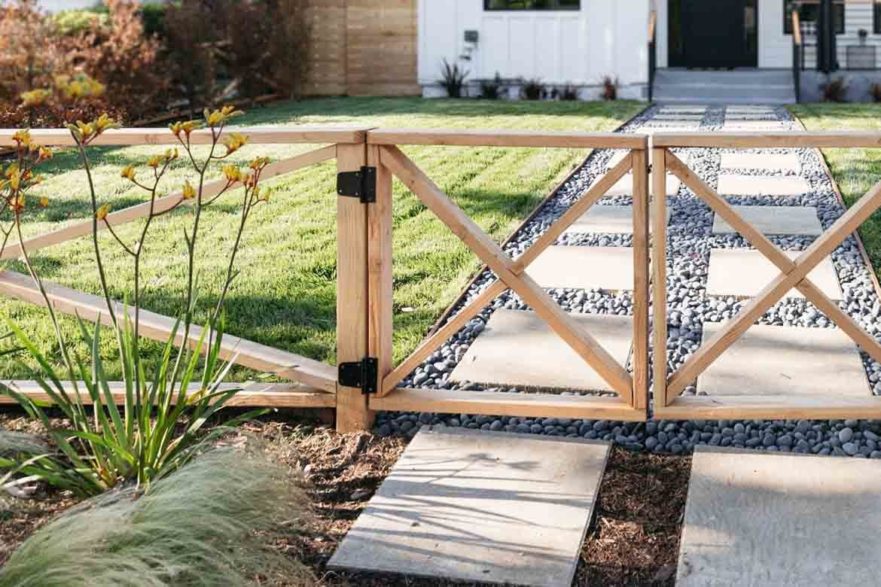
A timber fence will never go astray in the front yard, whether it is purely for aesthetic purposes (like the rustic timber fence pictured above) or for privacy reasons in the case of a timber screen.
3. Modern timber fence
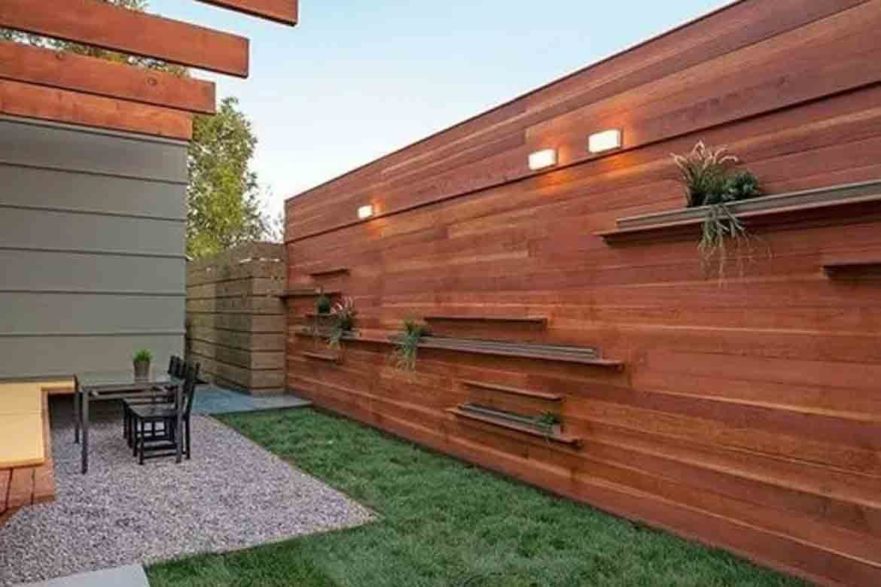
Modern fencing has upped the game with the inclusion of new features and tech such as floating shelves and outdoor lights. Timber is a particularly appropriate material for such developments, as the simple natural colours provide a complimentary contrast against high tech designs.
2. White picket fence
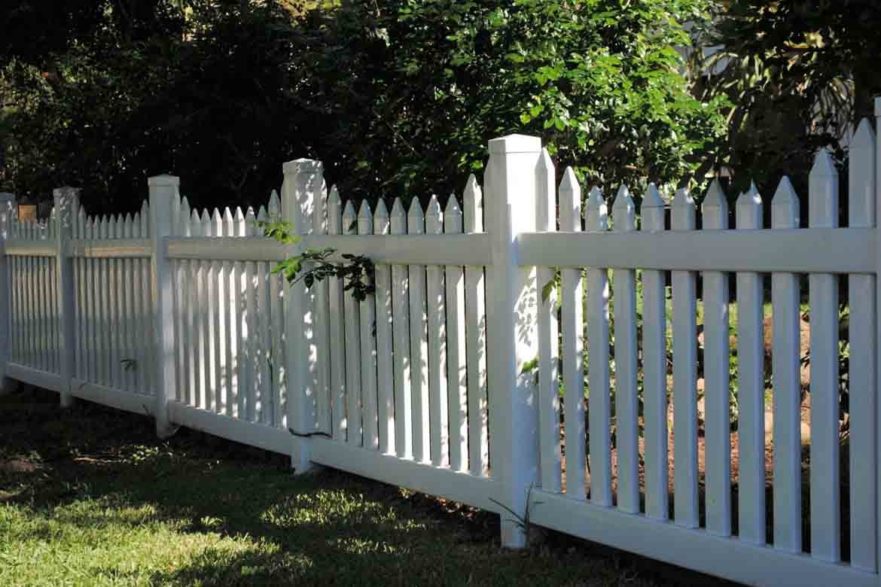
The white picket fence is a classic symbol of suburban success and the American dream for a reason; it is a beautiful, unassuming fence design sure to enchant those who pass by.
1. Vertical timber batten fence
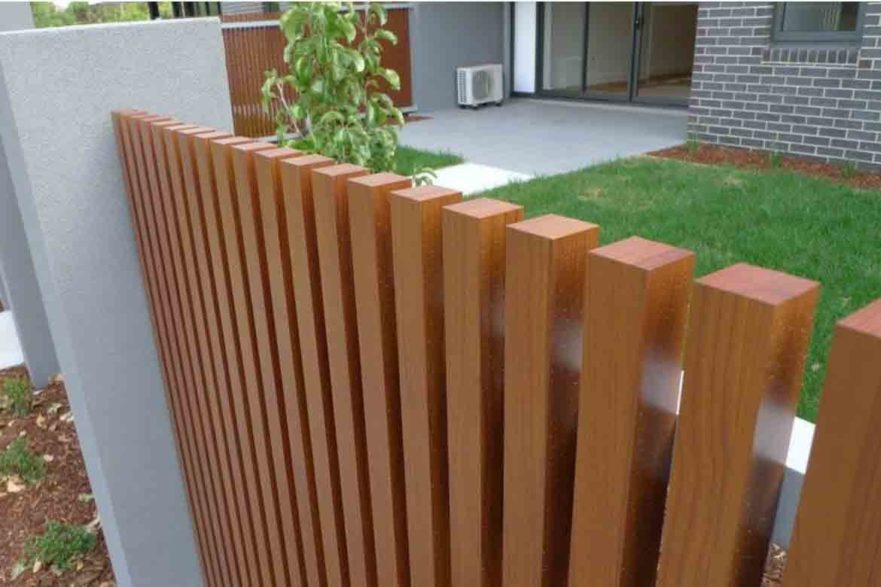
Batten fencing is a stylish alternative to the restrictive privacy screening that filters out sunlight. With batten fencing, the timber slats are placed slightly apart at even lengths to create space. This generates an artistic fence which will protect your privacy but allow for light and fresh air to pass freely through.

